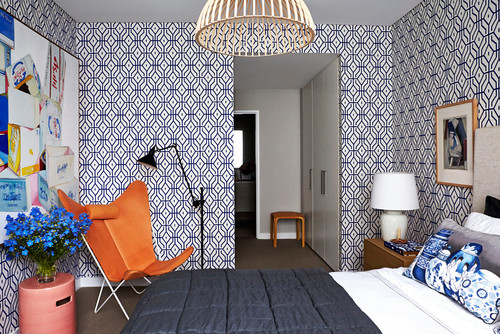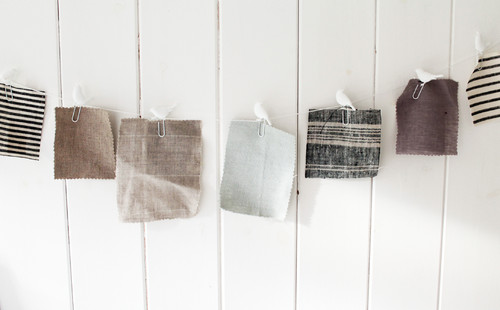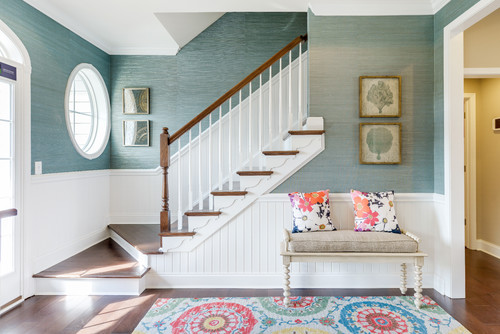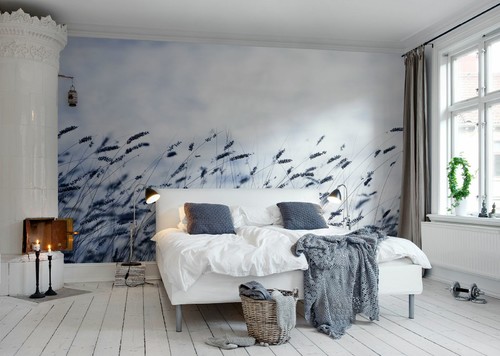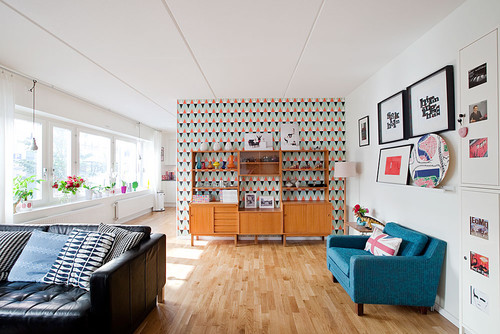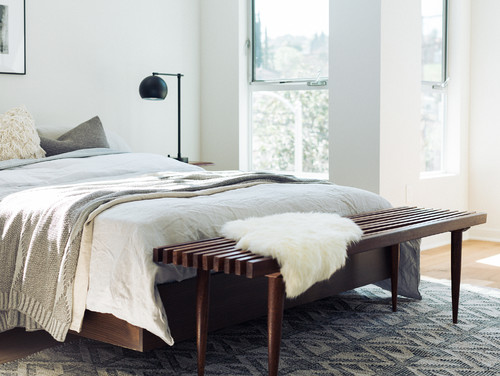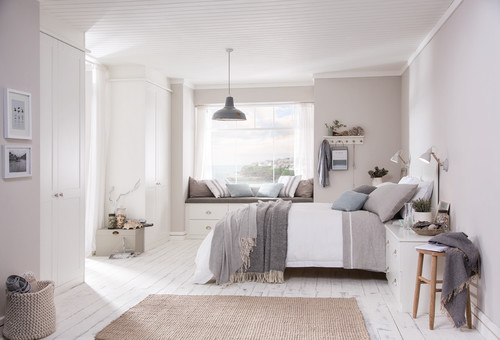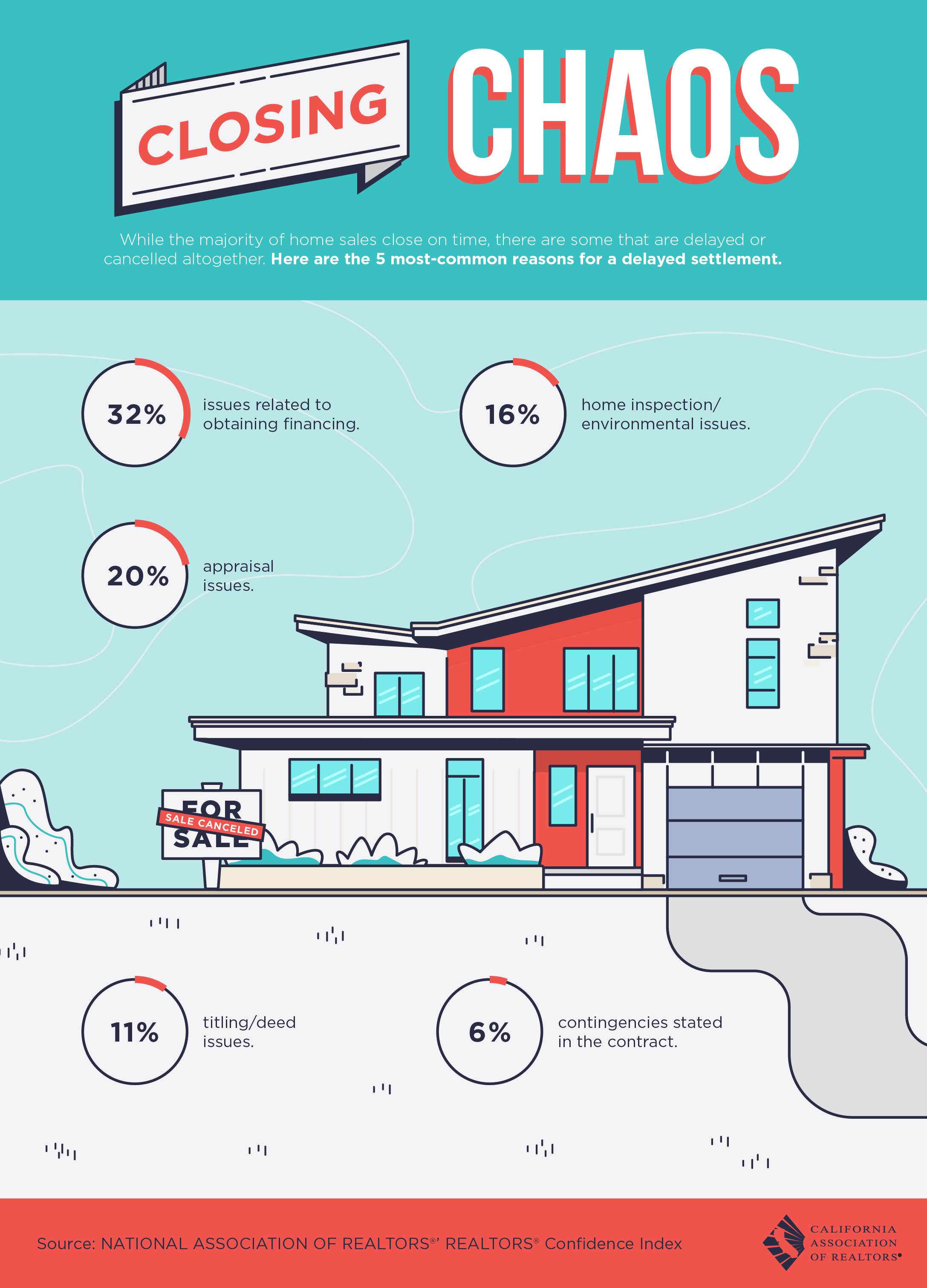Spring Selling Checklist

 With the early spring selling season kicking off shortly after the new year, it’s time to give your home the boost it needs to meet today’s buyers’ expectations. Take advantage of being inside during the cold winter months with these quick fixes that will help your property stand out from the competition, boost its value and sell quickly.
With the early spring selling season kicking off shortly after the new year, it’s time to give your home the boost it needs to meet today’s buyers’ expectations. Take advantage of being inside during the cold winter months with these quick fixes that will help your property stand out from the competition, boost its value and sell quickly.

Family Room Staged by PJ & Company Staging and Interior Decorating
Declutter & Organize
Start tackling one room at a time by packing up anything that will distract buyers from seeing the unique features of your property such as personal collections, family photos, newspapers, books and magazines. Rearrange and remove excessive furniture to simplify and make the room appear larger.
Make Basic Repairs & Updates
Make sure everything is in good working condition. Repair and replace broken light switches, bulbs, ceiling fans, door knobs, leaky faucets, shower heads, windows, thermostats, etc. Update lighting fixtures with contemporary styles and consider replacing older kitchen appliances with sleek, eco-friendly models to capture young buyer interest.

Bedroom Staged by PJ & Company Staging and Interior Decorating
Refresh and Brighten With Paint
Remove wallpaper and cover bold wall colors with a fresh coat of neutral paint to set the perfect backdrop for simple, updated styling. Give older style kitchen cabinets or wood vanities an instant facelift by covering with bright white or dark espresso paint. Then pair with knobs and drawer handles in brushed nickel or satin brass for an elegant finishing touch.
Fresh Flooring
There is nothing that dates a room more that worn, soiled carpeting. Remove and/or replace carpeting to reveal hardwood flooring underneath to instantly brighten and make the room feel more spacious. There are also many budget-friendly, easy to install options on the market now for replacing damaged flooring such as laminate and vinyl that look and feel just like wood.

Mudroom Remodel by PJ & Company Staging and Interior Decorating
Add Storage Options
Today’s buyers are looking for plenty of storage. Added storage solutions such as built-in bookshelves, window seats with storage underneath, entry storage units, and extra closet hooks and rods are a practical way to attract immediate buyer attention.
Partner With a Pro
Consult with a professional stager who will have an objective eye and knowledge of what appeals to today’s sophisticated buyers. They will provide a range of solutions for enhancing your home showings by recommending everything from furniture placement to wall color to complementary modern accessories to add clean, welcoming style.
For more examples of interior decorating and home staging, visit www.pjstagingdecorating.com.
Patti Stern, principal, interior decorator and professional stager of PJ & Company Staging and Interior Decorating, has been decorating and staging homes since 2005. She and her team provide turnkey, full service home staging and interior decorating to clients across Connecticut, New York and Massachusetts. Her company has received Houzz 2015, 2016 and 2017 Awards for Customer Service.
Patti has been featured in Connecticut Magazine, the Hartford Courant, Danbury News-Times and on NBC Connecticut and FOX TV. She is a regular contributor to the National Association of Realtor’s Blog, “Style, Staged and Sold.”
For more information, contact Patti Stern at 203-640-3762 or patti@pjstagingdecorating.com
Architectural Styles on the Horizon


Whether you’re buying, selling or staging a home, popular architectural styles and buzz-words can help you get the most out of your investment. Current and upcoming homebuyers have an “instant” mindset, are debt-savvy, and want all the luxuries of rural living in growing cities. Trending architectural styles, like shipping container and tiny homes, reflect the budget-friendliness and fast construction new homeowners want. Contemporary glass structures, modern farmhouse, and a Spanish-colonial revival make way for bigger homes and budgets.
Shipping Container
These days, building your own home is as easy as clicking around on a website or flipping through a catalog, mixing materials and adding desired features. The architecture that results is a Lego-like, innovative blend of textures and shapes that is “unique” to the homeowner’s preferences and taste. These styles are known as shipping container style homes. Some simulate the appearance of or incorporate actual shipping container material in their textures. By selecting from pre-fab, mix and match elements, homeowners can be sure that these features are ready-to-go. They can get exactly what they want without wasting time or resources.
Tiny Home
Floor plans for both homes and apartments are getting smaller and smaller as the demand for land goes up and urban populations boom. Architects and builders are getting creative with their designs, finding new ways to make the most out of spaces as small as 300 square feet. This is “tiny home” size. These homes often sell at a lower price point than traditional-size homes, which makes the investment easier for modern homebuyers who are grappling with significant loan debt. These designs make the most out of every square inch with hidden storage, multi-use rooms and concepts like open space and indoor-outdoor living.
Santa Barbara
3927 Laguna Blanca Dr., Santa Barbara, CA listed by Linda Lorenzen with Coldwell Banker Residential Brokerage
One of the most desired builds, right now, is the Santa Barbara style of architecture. This involves white stucco walls, wood beam ceilings and red tile roofs. It gets its name from the Spanish Colonial style that boomed in Santa Barbara in the early 1900s. The city set the trend for the rest of the country and homeowners are finding that the aesthetics of this style are a top choice for their dream homes.
Modern Glass
Homeowners are knocking out walls and replacing them with glass doors and walls to see through to their back yards or patios. Incorporating the outdoors into indoor spaces is a top trend, right now. With the glass features, homeowners tend to blend sleek materials like concrete or wood. Modern glass style homes allow the outdoors to flow into the indoors and vice versa. This is a great trick to make the most of your property.
Updated Farmhouse
4576 Atwood Road Stone Ridge, NY listed by Cathy Pulichene with Coldwell Banker Village Green Realty
The farmhouse style has been a long-standing architectural icon. However, these days, the style is changing to incorporate more modern elements. The result is known as the modern farmhouse. In many builds, the design begins as a modern home outfitted with rural accents like barn doors and farmhouse siding. For builds that begin in the farmhouse style, modern colors and mixed industrial textures bring the old into the new.
If you are considering a new construction, an architect can help you to stay on top of the trends so that your home will be a success on the market well into the future. According to HomeAdvisor, the average cost to hire an architect is $5,000. They can guide you through the process to help maximize on your time and resources.
Lauren White is a freelance writer who enjoys reading, hiking and traveling. She can usually be found on an outdoor adventure with her boyfriend and little sister on the weekends.
Source: CB Blue Matter Blog
Blue is Winning

 What color are first place ribbons? That’s right — they’re blue. That means blue is the official color of winning, and it also happens to be the official color of Coldwell Banker, the real estate brand who is #1 in dollar sales volume. Coincidence? We think not.
What color are first place ribbons? That’s right — they’re blue. That means blue is the official color of winning, and it also happens to be the official color of Coldwell Banker, the real estate brand who is #1 in dollar sales volume. Coincidence? We think not.
Ready to perform like a champion? Visit coldwellbanker.com/careers and see what it feels like to be on the winning team.
Source: CB Blue Matter Blog
Blue Matters


“There’s always room for a story that can transport people to another place.” – J.K. Rowling
I love stories. Whether they are told over a meal, in the pages of a book, or on an 80 ft. movie screen makes no difference. Stories have the ability to make you experience every emotion available and can move you in unimaginable ways.
But the most important piece of any story is the characters. For a story to stand the test of time it has to have great characters. We need to be able to connect with them, feel for them, root for them — or against them. Everything they do drives the story forward, for better or worse. Without strong characters, the best stories crumble.
The same is true for brands.
In fact, having good characters – good people – is even more critical to creating and sustaining a strong brand. Because for a brand, its people are active participants in its creation. I truly believe a brand is a story that is told every single day, not just by its message, but by its people.
Every day, members of the brand help tell the story of Coldwell Banker through interactions with clients, the industry and each other. It’s a story of a brand that has been helping people find a place to call home for more than 111 years. It is a story founded by people who were passionate about creating change in the real estate industry and we continue doing so to this day.
This got me thinking: what is it about our story, our people, our brand that has allowed it – not just stand the test of time – but to continue to succeed?
Science gave me the answer. It comes down to our DNA. We may come from different backgrounds and upbringings. We reside in different corners of the world with differences in appearance, beliefs, and lifestyles, but studies have shown that who we surround ourselves and who we choose to associate with are often those who have similar genetic markers.
You’ve heard the phrase “birds of a feather flock together.” It’s an idiom based in truth. What draws people to Coldwell is beyond just the outward appearance of what we seem to be. While our chemical makeup sets us on a common path, the other side of this story is that each of us possess shared values that are core to our brand and THAT is what truly draws us together.
Coldwell Banker is a brand founded on trust, integrity and awesomeness, but at times we lose sight of this story because we get caught up in the day to day distractions of our work. What I see in our brand’s DNA is an opportunity for us to truly standout in this crowded and often crazy industry.
It’s almost as if we were born to be part of this story. In fact, we even have a name for the group of characters in this story of the Coldwell Banker brand: Generation Blue.
Blue has become a rallying cry for all that this brand is and stands for. We wear blue. We bleed blue, because we are GEN BLUE.
Blue represents the power of our company, the power of our people and the power of our team in so many different ways. And it’s time that we took a look at all that it truly means to be Coldwell Banker blue.
Blue is the color of winning. According to color psychology, blue is associated with intelligence, invokes trust and spurs creativity. Blue is cool under pressure and calming influence. Blue is the color of leaders and one that builds relationships.
We have a powerful, one of a kind brand; one that has the most advanced tools and the greatest reputation in the industry. A brand that is built on people who have exceptional integrity and are pillars of their communities.
There’s a reason Coldwell Banker has succeeded for over 111 years while countless other brands, both in our industry and outside it, have failed. Our success is built on the values that have stayed true to our brand and the fact that we continue to attract others who share those values and spirit.
As J.K. Rowling said, stories have the power to transport people to another place, and when you discover the story of who the Coldwell Banker brand truly is and what we have offer, it may just transport you to becoming a part of Gen Blue.
Come join the blue and see what makes Gen Blue truly the best path to success at coldwellbanker.com/careers.
Turn Them Blue


Many companies have already incorporated smart home tech into their daily business. Some have installed smart locks, lights or thermostats in the office. Many have encouraged agents to take the Coldwell Banker Smart Home course. The first-and-only course of its kind created for real estate agents. Companies have also encouraged agents to talk about the benefits of smart home tech in listing presentations.
Have you considered how you can use the brand’s leadership in the Smart Home space as a way to set your company apart and attract new agents to your office?
Even for agents who haven’t yet had a transaction that included smart home tech in one way or another, chances are good that they will in 2018. Most aren’t going to be prepared. And many may not even know where to go to find information on how smart home can or should fit into their business.
January is Smart Home Month here at Coldwell Banker. We are kicking the month off with our sponsorship of the Smart Home Marketplace at CES (Consumer Electronic Show) in Las Vegas! We will have agents from around the country creating content specifically to help other agents understand how to use Smart Home in their own business. This is a great opportunity for you to reach out to the agents in your market, offer them information and demonstrate the value you can add to their business. Here are a few questions to start with:
- Have you considered how to talk about smart home tech during a listing presentation?
- Do you know what you would say if a client asked you about the value of smart home tech during a purchase or sale?
- Have you thought about using smart home as a reason to get in front of your sphere and network in the new year?
Every day in January we will be adding new tips, tricks and best practices for incorporating smart home tech into a real estate business, along with new product spotlights. All of this content can be found at ces.coldwellbanker.com. That means every day there is a new reason to talk to your list of prospects.
Showing agents the power and importance of this technology in the sale of a home, is yet another way you can bring value to agents in your office and attract those not yet affiliated. Leverage the leadership of Coldwell Banker in this area to deliver a clear edge for agents by sharing insights into state-of-the-art smart home technologies and how to leverage them to dominate the marketplace.
From content to conferences, Coldwell Banker is collecting and delivering leading edge insights during Smart Home Month to help you understand how the smart home boom impacts real estate:
- CES: Catch Coldwell Banker on the floor of CES, Jan. 9-12 as the exclusive sponsor of the Smart Home Marketplace, which has grown every year since we began our sponsorship in 2016. It’s now over 114,000 square feet.
- Consumer Survey: Find out how consumers view smart home tech, what they expect agents to know about it and how they react to VR. Spoiler alert – they love it!
- Inman Connect New York: Coldwell Banker sponsors ICNY, Jan. 22-26, and hosts an exclusive lunch and learn on Jan. 23 where participants get the inside track on how to use smart home to market themselves and their listings.
- Daily Content: Get an agent’s perspective on how smart home tech can benefit your real estate business with video and blog posts straight from the CES show floor.
- Case Studies: Two case studies – one from T3 Sixty and one from Samsung – will explore how agents can be the early adopters of smart home in their market and how VR can truly set a listing apart.
If you’re already affiliated with Coldwell Banker and want to learn more about our Smart Home initiative, visit CB Exchange and search “Smart Home.”
If you would like to know what Coldwell Banker agents have access to, head to coldwellbanker.com/join and explore the possibilities of moving your business to Coldwell Banker.
Creating the Perfect Home Gym for the New Year/New You!


The New Year is upon us and we all know what that means! New Year’s resolutions get us motivated for healthier lifestyles. Instead of rushing out to buy a gym membership, I have a proposal: Why not invest in a home gym? Your home doesn’t have to be 20,000 square feet to accommodate the equipment you’d need to see your resolutions through. I can help you find space in just about any home, even with the rise in “tiny-homes,” to accomplish your home gym goals!
Considerations
- Do you have space available to convert into a dedicated exercise zone?
- What type of work-out routines would you be doing? Cardio, yoga, Pilates? (The latter are better for small spaces.)
- What type of equipment do you already have? (I once watched Kelly Ripa use canned goods to do curls on LIVE! with Regis and Kelly. Think outside the box as far as equipment!)
- What type of equipment do you need?
- What type of tech do you need or already have?
Next Steps
After you have answered the questions above, it’s time to start implementing the next things you need to do to build your home gym.
- Did you decide you have an area that can convert into a gym space? If so, great! You can move on to the next step. If not, maybe you should consider the more portable side of gym equipment.
- Examples of portable equipment: foldable treadmills, ab wheels, free weights, DVDs, yoga mat, and resistance bands. These are all great items that will help you “feel the burn,” and you can hide them away when you are finished using them.
- Already have your home gym spot picked out? Great! You’re ahead of the curve! Need some home gym inspiration? Remember when we asked you what type of work-out routines you’d be doing? This is the time to recall that information and start putting it to use!
- Will you be doing cardio? Do you like the idea of stationary bikes? The tech sector has really upped their game and now you can connect via WiFi on your stationary bike to a class anywhere or find a “fitness on demand” class. A quick Google search can get you going in the right direction! Are treadmills or elliptical machines more your style? Mount a large screen “Smart TV” on the wall directly in front of where your machine will be. The TV will be a helpful distraction, and you’ll have your cardio finished in no time.
- Doing yoga? A yoga mat and a DVD can go a long way! I personally prefer the thicker mats, especially if you have hardwood floors.
- Doing Pilates? Again, a mat and a DVD can get you going, but there are also some really great programs online that you can connect to with your Smart TV. With Daily Burn, for example, you can stream hundreds of workouts and change up your routine with the click of a button.
A Few Last Tips
Not interested in investing too much money? Or are you still not convinced that these ideas would work for your home? Remember this, your workout can come from unlikely sources. Stairs, chairs, and walls are all excellent tools to get your sweat on. So while you’re thinking about health and fitness in the new year, lack of a home gym can no longer be an excuse.

 Facebook
Facebook
 Twitter
Twitter
 Pinterest
Pinterest
 Copy Link
Copy Link







